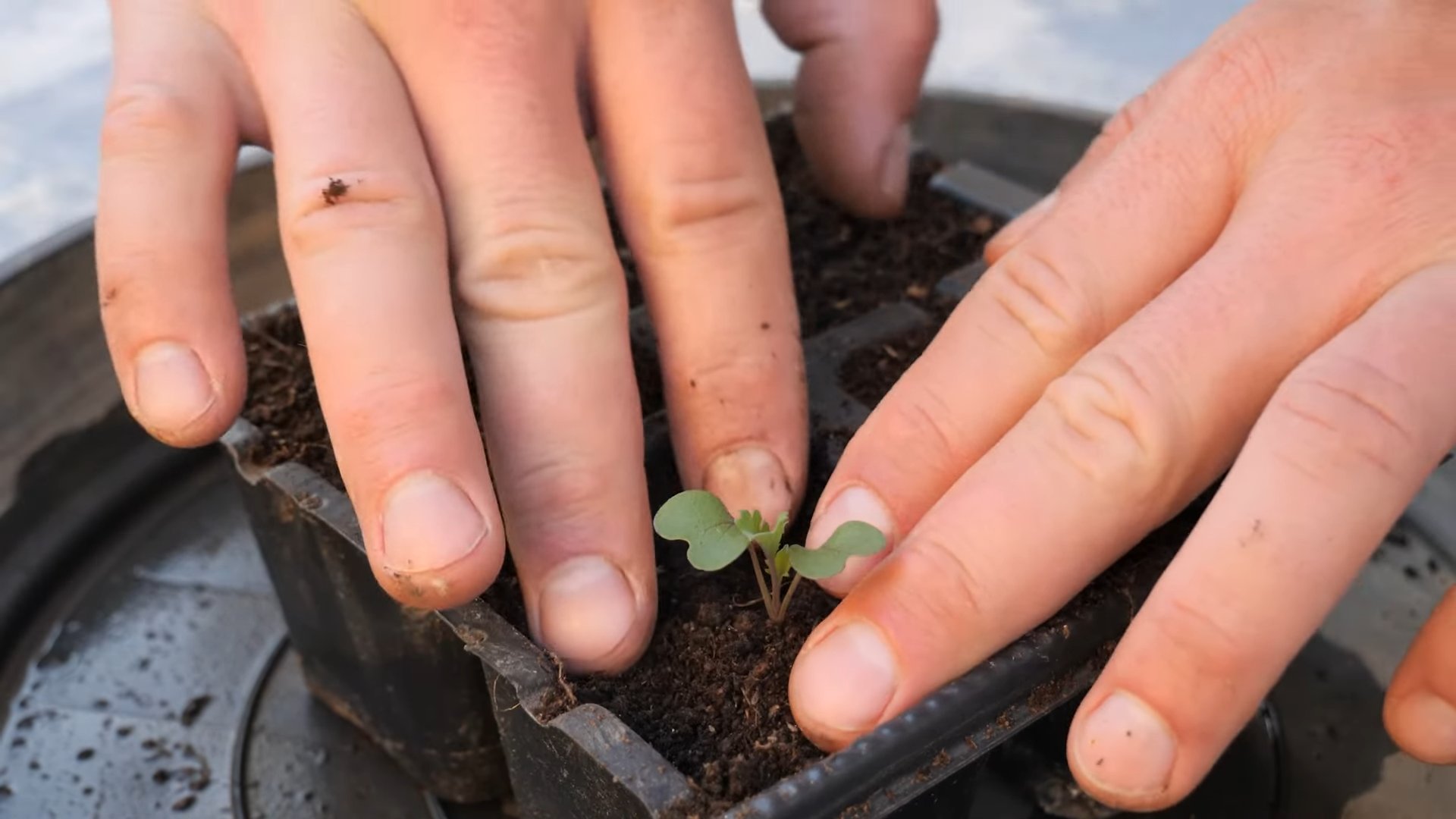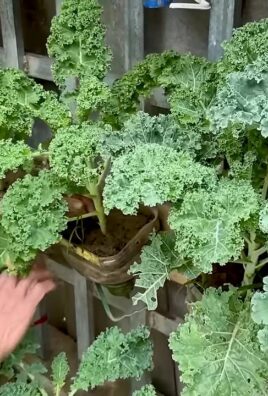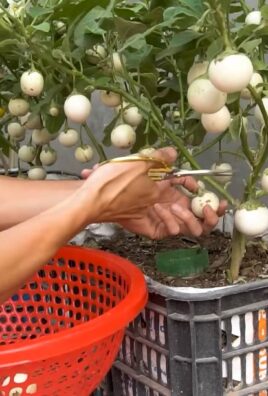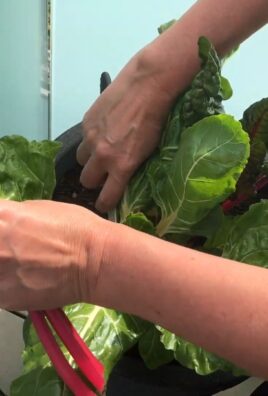Grow Kale at Home, and unlock a world of fresh, nutritious greens right outside your door! Have you ever dreamt of snipping vibrant, leafy kale for your morning smoothie or a delicious salad, knowing exactly where it came from and how it was grown? Well, dream no more! This isn’t just about gardening; it’s about embracing a sustainable lifestyle and connecting with nature in a truly rewarding way.
Kale, a nutritional powerhouse, has been cultivated for over 2,000 years, with roots tracing back to ancient Greece and Rome. It was a staple food for peasants and a symbol of resilience. Today, it’s experiencing a well-deserved renaissance, celebrated for its health benefits and versatility in the kitchen. But let’s be honest, buying organic kale from the store can be expensive, and sometimes, it just doesn’t have that fresh, vibrant flavor you crave.
That’s where this DIY guide comes in! I’m going to share some simple, yet effective tricks and hacks to help you grow kale at home, even if you have limited space or zero gardening experience. Imagine the satisfaction of harvesting your own organic kale, knowing you’re providing your family with healthy, delicious food while saving money and reducing your carbon footprint. Ready to get your hands dirty? Let’s dive in!

Growing Kale at Home: A Beginner’s Guide
Okay, so you want to grow kale at home? Awesome! Kale is a nutritional powerhouse, and nothing beats the taste of fresh, homegrown greens. I’m going to walk you through everything you need to know, from choosing the right variety to harvesting your bounty. Don’t worry if you’ve never gardened before; this guide is designed for beginners. Let’s get started!
Choosing Your Kale Variety
First things first, let’s talk about kale varieties. There’s more to kale than just the curly stuff you see at the grocery store! Here are a few popular options:
* **Curly Kale (e.g., ‘Vates Blue Curled’):** This is the classic kale, with tightly curled leaves and a slightly bitter taste that mellows with cooking. It’s super hardy and easy to grow.
* **Lacinato Kale (aka Dinosaur Kale or Tuscan Kale):** This variety has long, slender, dark green leaves with a bumpy texture. It’s milder and sweeter than curly kale and holds up well in soups and stews.
* **Red Russian Kale:** This kale has flat, fringed leaves with purple stems. It’s tender and sweet, especially when young, and adds a beautiful pop of color to your garden.
* **Redbor Kale:** This is a visually stunning kale with deeply ruffled, purple-red leaves. It’s slightly milder than curly kale and makes a great ornamental edible.
I recommend starting with a variety that appeals to you visually and taste-wise. Don’t be afraid to experiment!
Starting from Seed vs. Transplants
You have two main options for starting your kale: from seed or from transplants (small kale plants you buy at a nursery).
* **Starting from Seed:** This is the more economical option, and it gives you more control over the entire growing process. You can start seeds indoors 6-8 weeks before the last expected frost or direct sow them in your garden a few weeks before the last frost.
* **Using Transplants:** This is a faster and easier option, especially for beginners. You can find kale transplants at most garden centers in the spring and fall. Just make sure to choose healthy-looking plants with no signs of pests or diseases.
I personally prefer starting from seed because I enjoy the whole process, but transplants are a great option if you’re short on time or want a head start.
Preparing Your Garden Bed
Kale needs well-drained soil that’s rich in organic matter. Here’s how to prepare your garden bed:
* **Choose a Sunny Location:** Kale needs at least 6 hours of sunlight per day.
* **Test Your Soil:** A soil test will tell you the pH and nutrient levels of your soil. Kale prefers a slightly acidic soil with a pH between 6.0 and 7.0. You can buy a soil test kit at most garden centers.
* **Amend Your Soil:** If your soil is heavy clay or sandy, amend it with compost, aged manure, or other organic matter. This will improve drainage, aeration, and nutrient content.
* **Loosen the Soil:** Use a garden fork or tiller to loosen the soil to a depth of at least 12 inches.
* **Remove Rocks and Debris:** Remove any rocks, roots, or other debris from the garden bed.
* **Level the Soil:** Rake the soil to create a smooth, level surface.
Planting Your Kale
Okay, now for the fun part – planting!
Planting from Seed:
1. **Sow Seeds:** Sow seeds about 1/2 inch deep and 1 inch apart in rows that are 18-24 inches apart.
2. **Water Gently:** Water the soil gently to avoid disturbing the seeds.
3. **Keep Soil Moist:** Keep the soil consistently moist until the seeds germinate, which usually takes 5-10 days.
4. **Thin Seedlings:** Once the seedlings have a few true leaves, thin them to 12-18 inches apart. This will give them enough room to grow.
Planting Transplants:
1. **Dig Holes:** Dig holes that are slightly larger than the root balls of the transplants. Space the holes 12-18 inches apart in rows that are 18-24 inches apart.
2. **Remove Transplants from Pots:** Gently remove the transplants from their pots, being careful not to damage the roots.
3. **Place Transplants in Holes:** Place the transplants in the holes, making sure the top of the root ball is level with the soil surface.
4. **Fill Holes with Soil:** Fill the holes with soil and gently firm the soil around the plants.
5. **Water Thoroughly:** Water the transplants thoroughly.
Caring for Your Kale
Once your kale is planted, it’s important to provide it with the care it needs to thrive.
* **Watering:** Kale needs consistent moisture, especially during hot, dry weather. Water deeply whenever the top inch of soil feels dry. Avoid overhead watering, which can promote fungal diseases. Drip irrigation or soaker hoses are ideal.
* **Fertilizing:** Kale is a heavy feeder, so it benefits from regular fertilization. Apply a balanced organic fertilizer every 4-6 weeks. You can also side-dress with compost or aged manure.
* **Weeding:** Keep your garden bed free of weeds, which can compete with your kale for nutrients and water. Hand-pull weeds regularly or use a hoe to cultivate the soil.
* **Mulching:** Apply a layer of mulch around your kale plants to help retain moisture, suppress weeds, and regulate soil temperature. Straw, wood chips, or shredded leaves are good options.
* **Pest Control:** Kale can be susceptible to pests such as aphids, cabbage worms, and flea beetles. Inspect your plants regularly for signs of pests and take action promptly. Here are a few organic pest control methods:
* **Handpicking:** Pick off pests by hand and drop them into a bucket of soapy water.
* **Insecticidal Soap:** Spray plants with insecticidal soap to kill aphids and other soft-bodied insects.
* **Bacillus thuringiensis (Bt):** Apply Bt to control cabbage worms.
* **Row Covers:** Cover your plants with row covers to prevent pests from reaching them.
* **Disease Control:** Kale can also be susceptible to diseases such as downy mildew and black rot. To prevent diseases, provide good air circulation, avoid overhead watering, and remove any infected leaves promptly.
Harvesting Your Kale
You can start harvesting kale leaves as soon as they are large enough to eat, usually about 6-8 weeks after planting.
1. **Harvest Outer Leaves:** Harvest the outer leaves first, leaving the inner leaves to continue growing.
2. **Cut Leaves:** Cut the leaves with a sharp knife or scissors, being careful not to damage the plant.
3. **Wash Leaves:** Wash the leaves thoroughly before eating.
Kale is most flavorful after a frost, so don’t be afraid to leave it in the garden throughout the winter. You can continue to harvest leaves as needed.
Troubleshooting
Even with the best care, you might encounter some problems while growing kale. Here are a few common issues and how to address them:
* **Yellowing Leaves:** This could be a sign of nutrient deficiency, overwatering, or disease. Check your soil pH and nutrient levels, adjust your watering schedule, and inspect your plants for signs of disease.
* **Holes in Leaves:** This is usually caused by pests such as cabbage worms or flea beetles. Use organic pest control methods to get rid of the pests.
* **Stunted Growth:** This could be a sign of poor soil, lack of sunlight, or pest infestation. Amend your soil, make sure your plants are getting enough sunlight, and inspect them for pests.
Enjoying Your Homegrown Kale
Now that you’ve harvested your kale, it’s time to enjoy it! Kale is incredibly versatile and can be used in a variety of dishes. Here are a few ideas:
* **Salads:** Add chopped kale to salads for a boost of nutrients and flavor. Massage the kale with olive oil and lemon juice to tenderize it.
* **Smoothies:** Blend kale into smoothies for a healthy and delicious drink.
* **Soups and Stews:** Add kale to soups and stews for added flavor and nutrition.
* **Sautéed Kale:** Sauté kale with garlic, olive oil, and a pinch of salt for a simple and delicious side dish.
* **Kale Chips:** Bake kale leaves with olive oil and salt for a healthy and crunchy snack.
Growing kale at home is a rewarding experience that provides you with fresh, nutritious greens. With a little bit of care and attention, you can enjoy a bountiful harvest of kale throughout the growing season. Happy gardening!

Conclusion
So, there you have it! Growing kale at home isn’t just a gardening project; it’s an investment in your health, your wallet, and your connection to the natural world. Forget those wilted, overpriced bunches at the grocery store. With a little effort and this simple DIY trick, you can have a constant supply of fresh, vibrant kale right at your fingertips.
Why is this a must-try? Because it’s empowering! You control the quality, you eliminate the middleman, and you experience the satisfaction of nurturing something from seed to table. Plus, homegrown kale tastes infinitely better. The flavor is more intense, the texture is crisper, and you know exactly what went into growing it – no mystery pesticides or long-distance transportation.
But the benefits don’t stop there. Growing your own kale reduces your carbon footprint, promotes sustainable living, and adds a touch of green beauty to your home or garden. It’s a win-win-win situation!
Feeling adventurous? Try different varieties of kale! Curly kale is a classic, but don’t overlook Lacinato (dinosaur) kale with its dark, bumpy leaves, or Red Russian kale with its beautiful purple stems. Experiment with different growing mediums, from traditional soil to hydroponics. You can even try growing kale indoors under grow lights if you have limited outdoor space.
And the best part? You don’t need to be an expert gardener to succeed. This DIY trick is designed for beginners. It’s straightforward, forgiving, and yields impressive results. Even if you’ve never grown anything before, you can do this!
We’re confident that once you experience the joy of harvesting your own fresh kale, you’ll be hooked. Imagine adding it to your morning smoothies, sautéing it with garlic and olive oil, or using it as the base for a hearty salad. The possibilities are endless!
Don’t just take our word for it. Give this DIY trick a try and see for yourself. We encourage you to share your experiences with us in the comments below. Tell us about your successes, your challenges, and your favorite ways to use your homegrown kale. Let’s build a community of kale-loving gardeners!
So, grab your seeds, get your hands dirty, and start growing kale at home today. You won’t regret it!
Frequently Asked Questions (FAQs)
What is the best time of year to plant kale?
Kale is a cool-season crop, which means it thrives in cooler temperatures. The best time to plant kale depends on your climate. In areas with mild winters, you can plant kale in the fall for a winter harvest. In colder climates, plant kale in early spring, a few weeks before the last expected frost. You can also start kale seeds indoors 6-8 weeks before the last frost and transplant them outdoors once the weather warms up. For a continuous harvest, consider succession planting, sowing new seeds every few weeks.
How much sunlight does kale need?
Kale needs at least 6 hours of sunlight per day to grow well. If you’re growing kale indoors, you’ll need to supplement with grow lights. Choose a sunny spot in your garden that receives direct sunlight for most of the day. If you live in a hot climate, some afternoon shade can help prevent the leaves from scorching.
What kind of soil is best for growing kale?
Kale prefers well-drained soil that is rich in organic matter. Amend your soil with compost or aged manure before planting to improve its fertility and drainage. Kale also prefers a slightly acidic to neutral soil pH, between 6.0 and 7.0. You can test your soil pH with a soil testing kit and adjust it accordingly.
How often should I water kale?
Kale needs consistent moisture to thrive. Water deeply and regularly, especially during dry periods. Aim to keep the soil consistently moist but not waterlogged. Overwatering can lead to root rot. Mulching around your kale plants can help retain moisture in the soil and suppress weeds.
What are some common pests and diseases that affect kale?
Kale can be susceptible to various pests and diseases, including aphids, cabbage worms, flea beetles, and fungal diseases. Inspect your plants regularly for signs of infestation or disease. You can control aphids and cabbage worms with insecticidal soap or Bacillus thuringiensis (Bt). Flea beetles can be controlled with row covers or diatomaceous earth. Prevent fungal diseases by providing good air circulation and avoiding overhead watering.
How do I harvest kale?
You can start harvesting kale leaves once they are about 4-6 inches long. Harvest the outer leaves first, leaving the inner leaves to continue growing. This will allow you to harvest kale continuously throughout the growing season. Simply snap or cut the leaves off at the base of the stem.
Can I grow kale in containers?
Yes, kale grows well in containers. Choose a container that is at least 12 inches deep and wide to allow the roots to spread. Use a well-draining potting mix and water regularly. Container-grown kale may need more frequent watering and fertilization than kale grown in the ground.
How do I fertilize kale?
Kale is a heavy feeder and benefits from regular fertilization. Fertilize your kale plants with a balanced fertilizer every 2-3 weeks. You can also side-dress your plants with compost or aged manure. Avoid over-fertilizing, as this can lead to excessive leaf growth and reduced flavor.
How do I store kale after harvesting?
Store kale in the refrigerator in a plastic bag or container. It will keep for up to a week. Wash the kale just before using it. You can also freeze kale for longer storage. Blanch the kale in boiling water for 2-3 minutes, then plunge it into ice water. Drain well and freeze in freezer bags or containers.
What are some ways to use homegrown kale?
The possibilities are endless! Kale can be used in salads, smoothies, soups, stews, stir-fries, and more. It can be sautéed, steamed, baked, or even eaten raw. Try adding kale to your favorite recipes for a boost of nutrients and flavor. You can also make kale chips by baking kale leaves with olive oil and seasonings.
Is growing kale at home organic?
Growing kale at home allows you to control the inputs and ensure it is organic. By using organic seeds, soil amendments, and pest control methods, you can grow kale that is free from synthetic pesticides and fertilizers. This is a great way to ensure you are consuming healthy and nutritious food.




Leave a Comment